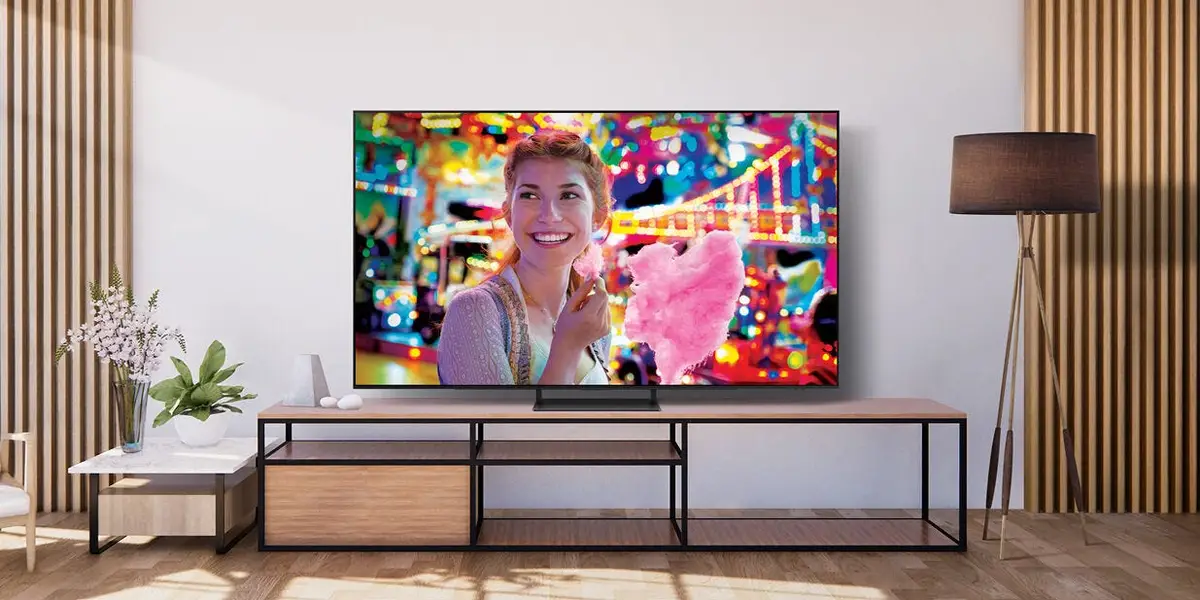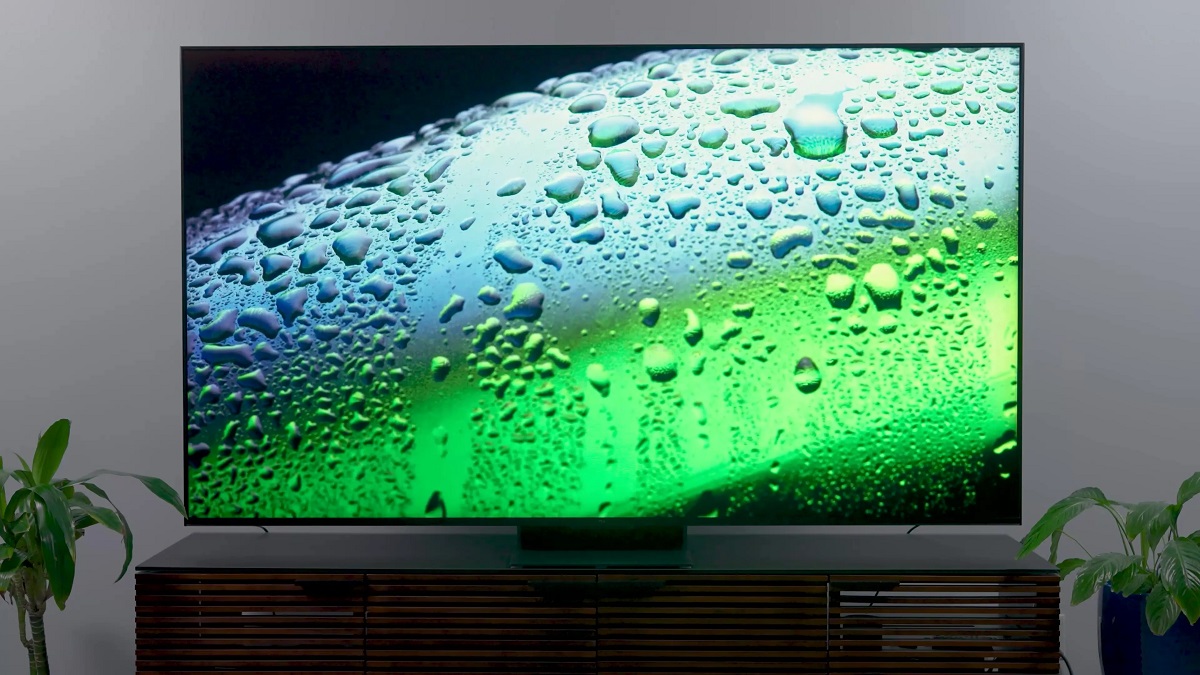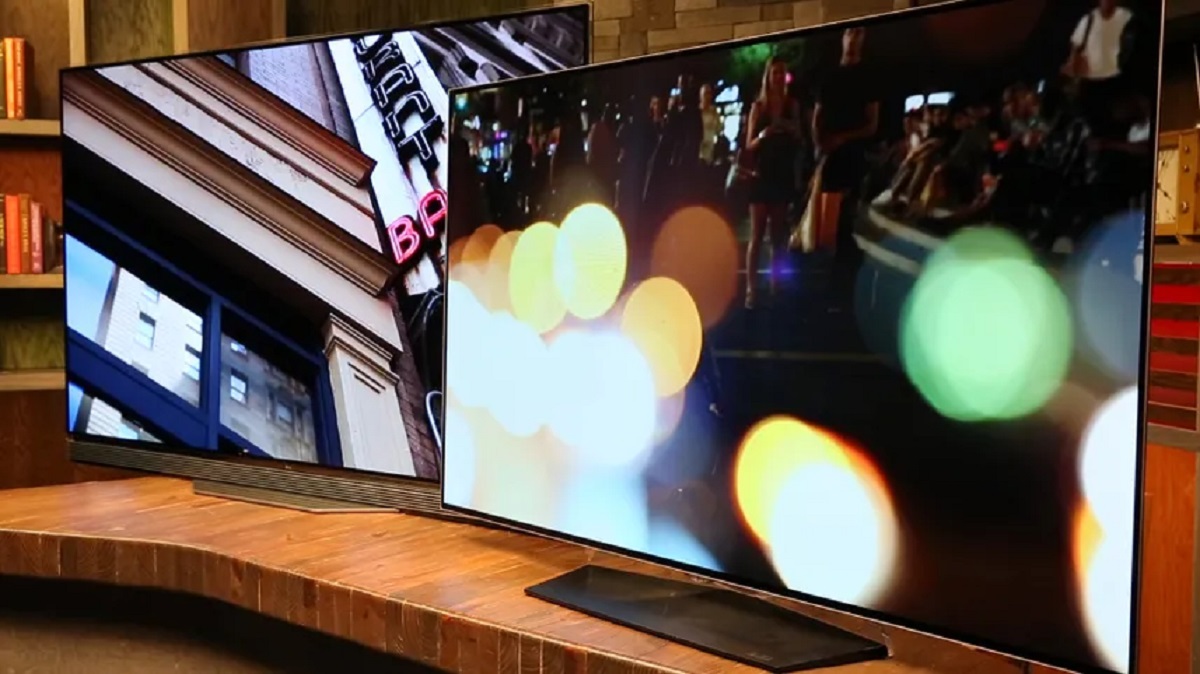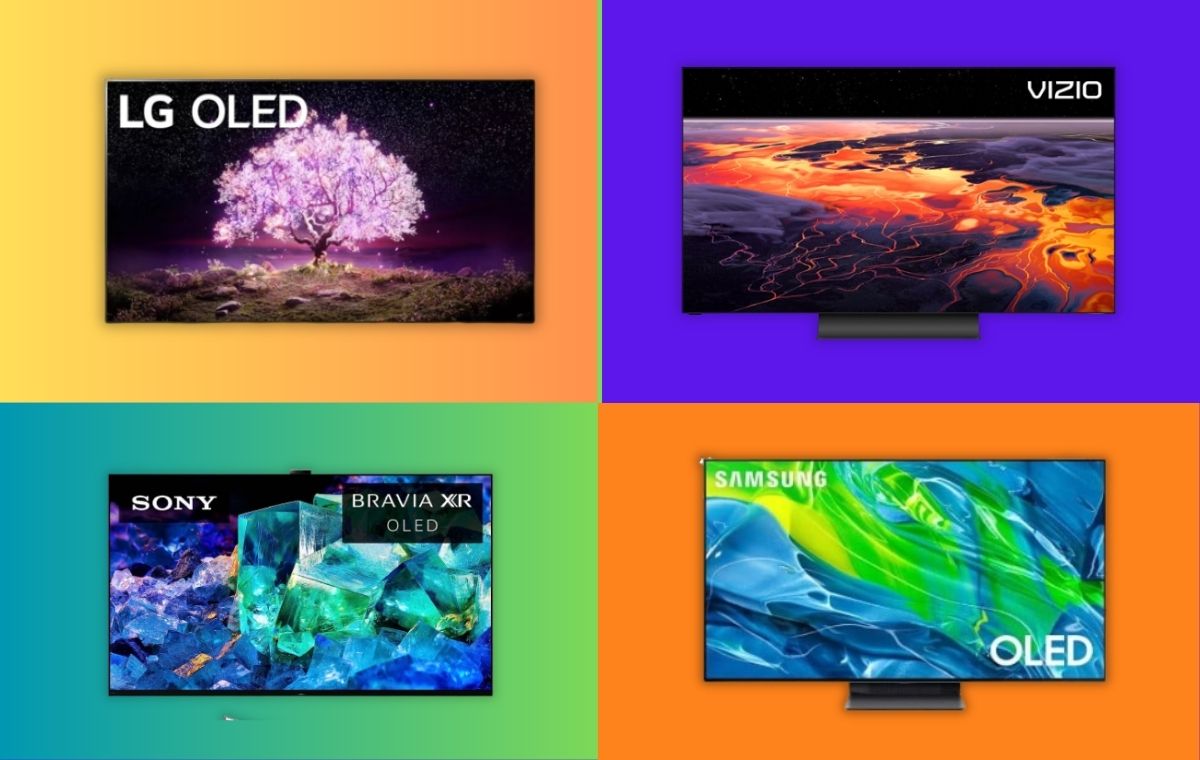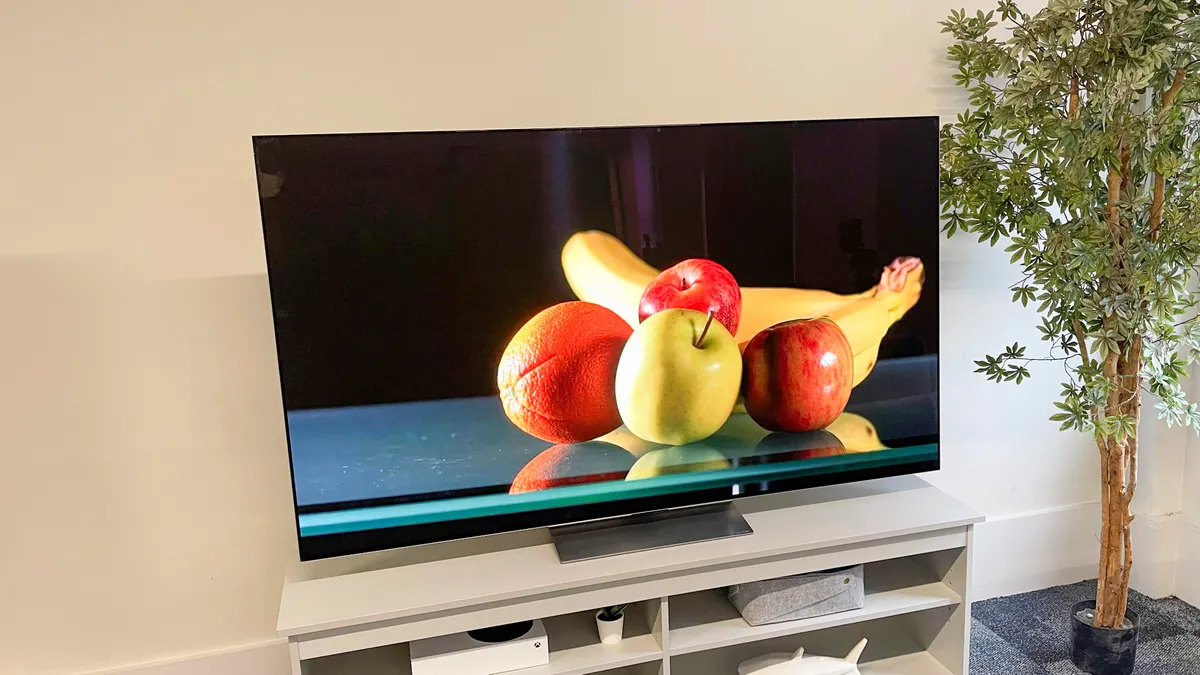Introduction
One of the most frustrating experiences for LG OLED TV owners is when their TV refuses to connect to Wi-Fi. In today’s digital age, having a stable and fast internet connection is crucial for accessing online content, streaming services, and even performing software updates on your TV. If you’re facing this issue, you’re not alone, and there are several potential solutions to get your LG OLED TV back online.
Before diving into troubleshooting steps, it’s important to understand that connectivity issues can arise due to various factors. It could be related to the network settings, router configuration, TV firmware, or even external interference. By systematically examining these potential causes, you can identify the root of the problem and take appropriate action.
In this article, we will explore the reasons why your LG OLED TV might not be connecting to Wi-Fi and how to resolve the issue. Whether you’re a novice or tech-savvy user, we will guide you through each step in a clear and concise manner.
To successfully troubleshoot the issue, ensure that you have the necessary information on hand, such as your network name (SSID), Wi-Fi password, and your TV’s model number. These details will come in handy as we go through the troubleshooting process and help facilitate a smoother resolution.
So, if you’re ready to get your LG OLED TV back online and enjoy seamless streaming and internet access, let’s dive into the troubleshooting methods that will have you binge-watching your favorite shows in no time.
Checking the Network Connection
The first step in resolving the Wi-Fi connectivity issues with your LG OLED TV is to ensure that your network connection is functioning properly. Follow these steps to check the network connection:
1. Verify the Wi-Fi Network: Make sure that the Wi-Fi network you’re trying to connect to is available and accessible. Double-check the name of the network (SSID) and ensure that it’s in range of your TV.
2. Test Other Devices: Verify if other devices in your home, such as smartphones, tablets, or laptops, are able to connect to the Wi-Fi network. This will help determine if the issue lies with your TV or with the network itself.
3. Restart the Modem and Router: Sometimes, network connectivity problems can be resolved by simply power cycling your modem and router. Turn off both devices, wait for a few minutes, and then turn them back on. Once they’re back online, try connecting your TV to the Wi-Fi network again.
4. Check Ethernet Connectivity: If your LG OLED TV has an Ethernet port, you can connect it directly to the router using an Ethernet cable. This will help determine if the issue is specific to the Wi-Fi connection. If the TV connects successfully via Ethernet, it indicates a problem with the Wi-Fi settings or signal strength.
As you go through these troubleshooting steps, keep an eye out for any error messages or notifications that provide clues to the nature of the connectivity issue. These messages can often lead you in the right direction when it comes to identifying the underlying problem.
Remember, patience is key during this process. Wi-Fi connectivity issues can sometimes be resolved by simply disconnecting and reconnecting to the network or power cycling the router.
By following these steps and ensuring that your network connection is stable, you’ll be ready to move on to the next troubleshooting methods to resolve your LG OLED TV’s Wi-Fi connectivity issue.
Resetting the Router
If checking the network connection didn’t resolve the Wi-Fi connectivity issue with your LG OLED TV, the next step is to try resetting the router. Resetting the router can often resolve temporary glitches and re-establish a stable connection. Here’s how you can do it:
1. Locate the Reset button: Look for the small reset button on your router. It’s usually a pinhole-sized button located at the back or bottom of the device. You may need a small pointed object like a pin or paperclip to press it.
2. Press and hold the Reset button: Insert the pin or paperclip into the reset button and hold it down for about 10-15 seconds. This action will reset the router to its factory default settings.
3. Power off and power on the router: After the reset, turn off the router and unplug it from the power source. Wait for a few minutes before plugging it back in and turning it on. Give it some time to fully boot up and establish a stable connection.
4. Reconnect the TV to Wi-Fi: Now that the router has been reset and is back online, go to your LG OLED TV’s network settings and try connecting to the Wi-Fi network again. Make sure you enter the correct Wi-Fi password if prompted.
It’s worth noting that resetting the router will erase any personalized settings, such as port forwarding or network restrictions, that you may have configured. Make sure to take note of these settings before resetting the router so that you can reconfigure them later if needed.
If resetting the router doesn’t resolve the Wi-Fi connectivity issue, proceed to the next step in troubleshooting your LG OLED TV’s connection problem.
Restarting the TV and the Router
If the previous troubleshooting methods didn’t work, restarting both your LG OLED TV and the router can often help resolve Wi-Fi connectivity issues. Sometimes, the devices may encounter temporary glitches that can be rectified by a simple restart. Follow these steps to restart your TV and router:
1. Turn off the TV: Press the power button on your LG OLED TV to turn it off. Alternatively, you can unplug the TV from the power source.
2. Turn off the router: Locate the power button on your router and either press it to turn it off or unplug the router from the power source.
3. Wait for a few minutes: Leave both the TV and router unplugged for at least 1-2 minutes. This waiting period allows any residual charge to dissipate and ensures a complete power cycle.
4. Power on the router: Plug the router back into the power source and wait for it to fully boot up. This process may take a few minutes, and you’ll know it’s ready when the lights on the router stabilize.
5. Power on the TV: Plug the LG OLED TV back into the power source or press the power button to turn it on. Wait for it to boot up completely.
6. Connect to Wi-Fi: Once both the TV and router are powered on, go to the network settings on your LG OLED TV and attempt to connect it to the Wi-Fi network. Enter the correct Wi-Fi password if prompted.
By restarting both the TV and the router, you effectively clear any temporary network or software glitches that may have been causing the Wi-Fi connectivity issue. This method is easy to perform and often yields positive results.
If restarting the TV and router doesn’t resolve the issue, it’s time to move on to the next troubleshooting step to get your LG OLED TV connected to Wi-Fi once again.
Updating the TV’s Firmware
If restarting the TV and router didn’t resolve the Wi-Fi connectivity issue with your LG OLED TV, it’s worth checking if your TV’s firmware is up to date. Firmware updates often include bug fixes, improvements to network connectivity, and compatibility enhancements.
Here’s how you can update the firmware on your LG OLED TV:
1. Check for the latest firmware: Visit the LG support website or refer to your TV’s user manual to find the latest firmware version available for your specific TV model. Look for any release notes or firmware update instructions provided by LG.
2. Connect the TV to the internet: Ensure that your LG OLED TV is connected to the internet via Wi-Fi or Ethernet before attempting to update the firmware. Refer to the earlier troubleshooting methods if you’re having trouble connecting to the network.
3. Access the settings menu: Using your TV remote, navigate to the “Settings” menu on your LG OLED TV. Look for an option like “Support” or “System” to access the firmware settings.
4. Check for firmware updates: In the firmware settings menu, there should be an option to check for updates. Click on it to initiate the firmware update process.
5. Follow the on-screen instructions: If a firmware update is available, your TV will prompt you to download and install it. Follow the on-screen instructions to complete the update. It may take several minutes for the update to install, and your TV may restart during the process.
6. Test the Wi-Fi connection: After the firmware update is complete and the TV has restarted, go to the network settings and attempt to connect to the Wi-Fi network again.
Updating the firmware can often resolve Wi-Fi connectivity issues by ensuring that your TV has the latest software enhancements. It’s important to periodically check for firmware updates and apply them to keep your TV running smoothly.
Note that the firmware update process may vary slightly depending on your LG OLED TV model. If you encounter any difficulties or have concerns, refer to the LG support website or contact LG customer support for assistance.
If updating the firmware doesn’t resolve the Wi-Fi connectivity issue, move on to the next troubleshooting step in order to get your LG OLED TV back online.
Checking the Wi-Fi Settings on the TV
If your LG OLED TV is still experiencing Wi-Fi connectivity issues, it’s time to double-check the Wi-Fi settings on the TV itself. Incorrect or outdated settings can prevent your TV from connecting to the Wi-Fi network. Follow these steps to verify the Wi-Fi settings:
1. Access the settings menu: Using your TV remote, navigate to the “Settings” menu on your LG OLED TV. This menu is usually represented by an icon that looks like a gear or a wrench.
2. Navigate to the Network settings: In the settings menu, look for the “Network” or “Wi-Fi” option and select it. This will take you to the Wi-Fi settings.
3. Select your Wi-Fi network: In the network settings, you should see a list of available Wi-Fi networks. Locate your network’s name (SSID) and select it.
4. Enter the Wi-Fi password: If your network is secured, you will be prompted to enter the Wi-Fi password. Make sure you enter the correct password, taking note of any uppercase or lowercase letters, numbers, or special characters.
5. Adjust advanced settings (if necessary): In some cases, you may need to adjust advanced settings such as IP addresses or DNS settings. If you’re unsure about these settings, it’s best to leave them at their default values. However, if you have specific network requirements, consult your router’s documentation or contact your internet service provider for assistance.
6. Confirm the Wi-Fi connection: After entering the correct Wi-Fi password and adjusting any necessary settings, select the option to connect or save the Wi-Fi settings. Your LG OLED TV will attempt to establish a connection to the Wi-Fi network.
7. Test the connection: Once the TV is connected to the Wi-Fi network, try accessing online content or performing a software update to ensure that the connection is stable.
By checking and verifying the Wi-Fi settings on your LG OLED TV, you can resolve any potential configuration issues that may be preventing a successful connection. It’s always a good idea to double-check the network name (SSID) and password, as even a small typo can cause connection problems.
If checking the Wi-Fi settings doesn’t resolve the issue, there may be external factors such as Wi-Fi interference or signal strength issues to consider. We will explore these potential causes in the next section to further troubleshoot your LG OLED TV’s Wi-Fi connectivity problem.
Wi-Fi Interference
Wi-Fi interference can be another reason for your LG OLED TV’s connectivity issues. Interference can occur when other electronic devices or physical obstacles disrupt the Wi-Fi signal. Here are some potential sources of Wi-Fi interference to consider:
1. Distance from the router: Ensure that your LG OLED TV is not too far away from the router. The further the distance, the weaker the Wi-Fi signal becomes. Try moving the TV closer to the router to see if the connectivity improves.
2. Physical obstacles: Walls, floors, and other objects can obstruct the Wi-Fi signal. Thick walls made of concrete or metal can be particularly problematic. If possible, try repositioning the TV and router to reduce the number of obstacles between them.
3. Other wireless devices: Devices like cordless phones, baby monitors, and microwave ovens can interfere with Wi-Fi signals. Keep these devices away from your router and LG OLED TV, or use devices that operate on different wireless frequencies.
4. Signal congestion: In densely populated areas, there may be multiple Wi-Fi networks using the same channel, leading to signal congestion. Use a Wi-Fi analyzer app or software to identify crowded channels and switch your router to a less congested one.
5. Electronic interference: Other electronic devices such as fluorescent lights, wireless speakers, or Bluetooth devices can interfere with Wi-Fi signals. Temporarily turn off or distance these devices from the LG OLED TV and the router to check if they are causing the interference.
6. Wi-Fi extender placement: If you are using a Wi-Fi extender or booster, ensure that it is positioned correctly. Placing it too far from the router or too close to the TV can cause signal interference. Experiment with the extender’s placement for optimal coverage.
By addressing potential sources of Wi-Fi interference, you can improve the signal strength and overall connectivity of your LG OLED TV. Experiment with different configurations and device placements to find the best setup for your specific environment.
If Wi-Fi interference still persists despite these troubleshooting efforts, the next step is to reboot your LG OLED TV to clear any temporary software glitches. We will cover this in the next section to ensure a comprehensive approach to resolving the Wi-Fi connectivity problem.
Rebooting the TV
If you’re still experiencing Wi-Fi connectivity issues with your LG OLED TV, rebooting the TV itself can be a simple yet effective troubleshooting step. Rebooting the TV helps clear any temporary software glitches that may be causing the connectivity problem. Follow these steps to reboot your LG OLED TV:
1. Turn off the TV: Using the power button on your LG OLED TV or the TV remote, turn off the TV. Ensure that it is completely powered down.
2. Unplug the TV: Disconnect the power cord from the TV and wait for about 1-2 minutes. This waiting period allows any lingering charge to dissipate and ensures a complete power cycle.
3. Plug in the TV: Reconnect the power cord to the TV and wait for a few seconds. Make sure the TV is properly plugged into a power source.
4. Power on the TV: Press the power button on your LG OLED TV or the TV remote to turn it back on. Allow the TV to boot up completely, which may take a minute or two.
5. Connect to Wi-Fi: Once the TV is powered on, navigate to the network settings and attempt to connect to the Wi-Fi network again. Enter the correct Wi-Fi password if prompted.
Rebooting the TV can often resolve minor software glitches that may be hindering the Wi-Fi connectivity. It’s a simple process that requires no special technical knowledge and can be easily performed by anyone.
After rebooting the TV, perform a test to ensure that the Wi-Fi connectivity is stable. Try accessing online content or performing a software update on your LG OLED TV to confirm that the issue has been resolved.
If rebooting the TV did not fix the Wi-Fi connectivity problem, it’s time to reach out to LG Support for further assistance. They have a dedicated team of experts who can help you troubleshoot and resolve any persistent issues with your LG OLED TV’s Wi-Fi connectivity.
By following these troubleshooting steps, you have covered a comprehensive range of potential causes and solutions for your LG OLED TV’s Wi-Fi connectivity issues. We hope that one of these methods has helped you get your TV back online and ready for seamless streaming and internet access.
Contacting LG Support
If you have followed all the troubleshooting steps mentioned earlier and are still unable to resolve the Wi-Fi connectivity issues with your LG OLED TV, it may be time to reach out to LG Support for further assistance. The support team is knowledgeable and experienced in diagnosing and resolving various technical issues. Here’s how you can contact LG Support:
1. Visit the LG Support website: Go to the official LG website and navigate to the support section. Look for the “Contact Us” or “Support” page.
2. Choose your region and product: Select your region or country from the provided options and choose your LG OLED TV as the product category.
3. Select the preferred contact method: Depending on your location, LG Support offers various contact options such as phone, email, live chat, or even community forums. Choose the contact method that is most convenient for you.
4. Provide details and explain the issue: When contacting LG Support, be prepared to provide your LG OLED TV’s model number, serial number, and a detailed explanation of the Wi-Fi connectivity issue. The more information you can provide, the better equipped the support team will be to assist you.
5. Follow the guidance provided: Once you’ve made contact with LG Support, they will provide you with instructions and troubleshooting steps tailored to your specific situation. Follow these instructions closely and provide any requested information or logs to help facilitate a quick and accurate resolution.
Remember to stay patient and polite when contacting LG Support. Technical issues can sometimes require more advanced troubleshooting or even on-site repairs, so be prepared for further steps if necessary. LG Support is dedicated to providing excellent customer service and will do their best to assist you in resolving the Wi-Fi connectivity issue with your LG OLED TV.
By reaching out to LG Support, you can take advantage of their expertise and experience in troubleshooting LG products. They have the resources and knowledge to guide you through the process of resolving any persistent issues and getting your LG OLED TV back online.
In the next section, we will provide a summary of the troubleshooting steps covered in this article for quick reference.









